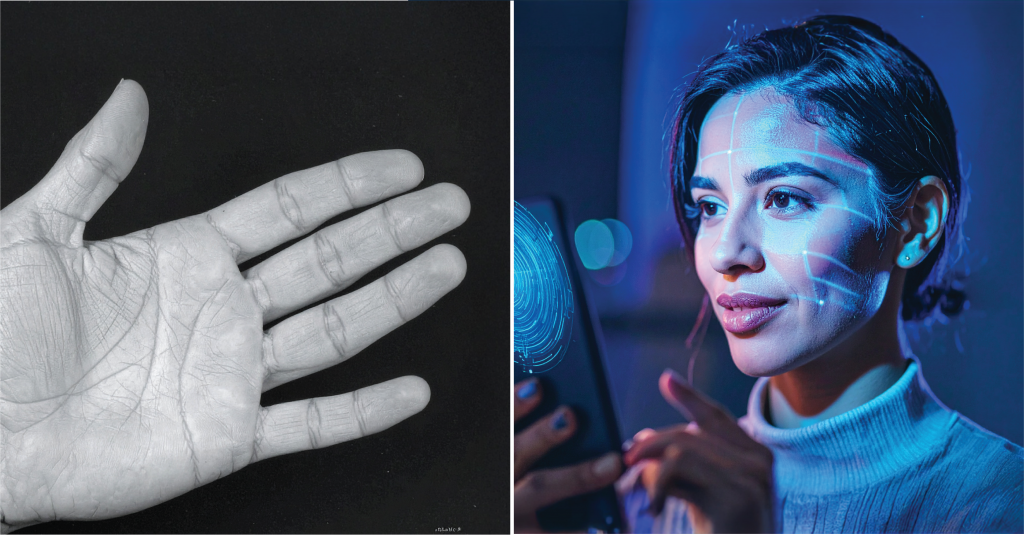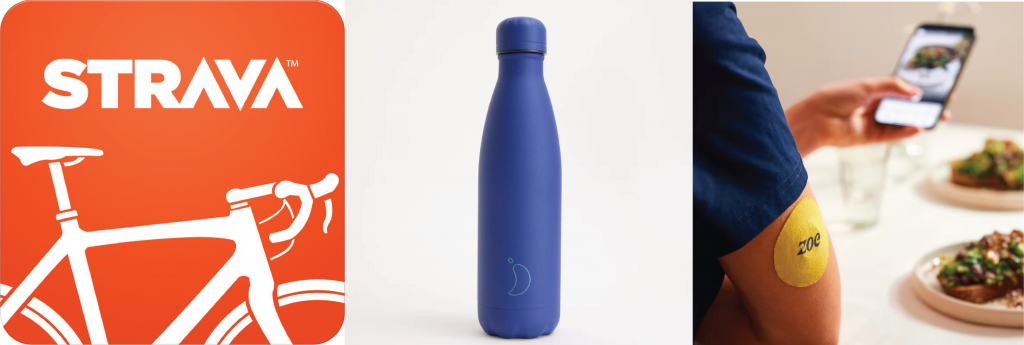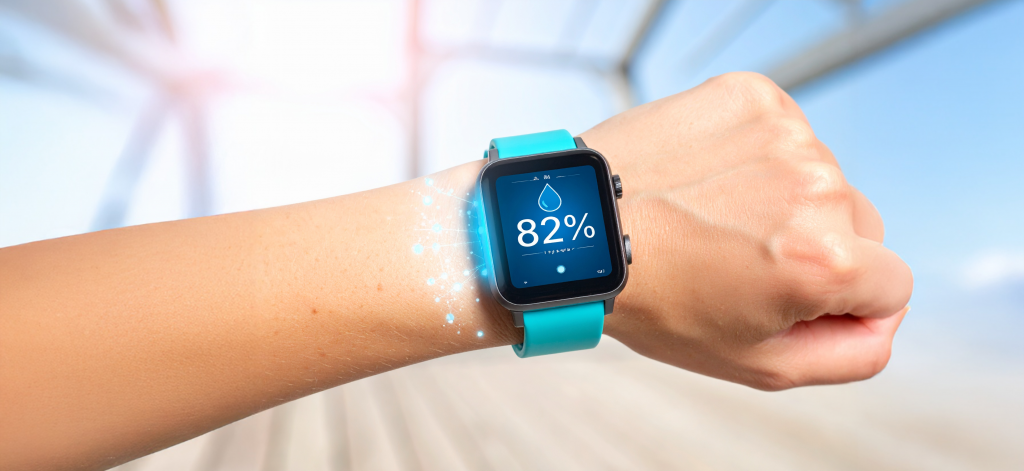1400nm – The Water Realm
The Future of Water Sensing for Humans and Earth
Our eyes evolved to be sensitive to one of the largest atmospheric transmission windows, the visible spectrum. This has shaped how we perceive and understand the world around us. But visible light tells only part of the story. Much more of the electromagnetic spectrum remains hidden from view, waiting to be unlocked with the right sensors. At Quantum Solutions, we recognise that the visible range leaves much of the picture untold. Just beyond the visible and near-infrared lies the short-wave infrared (SWIR). This region opens up entirely new ways of seeing that go beyond colour and reveal differences in materials, moisture content, and molecular structure.
SWIR covers a broad range with many possible applications, so in this blog we are focusing on a specific part of it: 1350 to 1450 nm. For simplicity, we will refer to this as 1400 nm. This band holds strong potential for next-generation consumer electronics. In this series, we will explore which precise wavelengths matter most and why 1400 nm stands out for its exceptional value in sensing water.
Water and 1400nm
So why focus on 1400 nm specifically? There are three things at play here: one is the wavelength itself interacting with water chemically, lower environmental noise and availability of active light sources

1400 nm corresponds to what is known as the first overtone of the O–H stretching vibration. A type of molecular vibration where the bonds between oxygen and hydrogen atoms in water absorb energy very efficiently. This wavelength in the SWIR spectrum makes it easy to detect liquid water on surfacess by showing a clear contrast in reflectance.
Secondly, the 1400 nm band lies in a region where atmospheric water vapor absorbs a significant portion of incoming sunlight. This means less light reaches the ground at this wavelength, naturally reducing background illumination and helping to suppress noise. As a result, when coupled with active illumination, the signal captured by the sensor is cleaner and more dominated by genuine moisture signatures rather than stray light or glare.
Lastly, it’s a practical choice because there is strong availability of mature, efficient LED and laser diode technology at this wavelength. This makes it well-suited for active illumination in consumer electronics and compact devices, where reliable, low-cost light sources are essential.
Although a big part of sunlight is blocked by water vapour in the 1360 – 1410 nm window, at 1400 nm liquid water absorbs strongly and consistently. This makes it one of the most reliable spectral markers for detecting moisture. In this blog, we’ll explore how this wavelength is being used to power one potential capability that could have major impacts for the way we access and gain insight from our devices.
Human – Under the skin…
Face recognition is quietly evolving. The first technologies used RGB (red-green-blue) ranges to detect the human face, then the industry moved to invisible NIR (Near InfraRed) range (850 – 940 nm). It’s now used by over 54% of mobile banking apps, however NIR range comes with some compromises. NIR struggles in bright sunlight, across varied skin tones, and is vulnerable to surface-level alterations. This might be considered trivially inconvenient, but when it’s supposed to protect our security not so much.

1400 nm, by contrast, interacts with the unique structure of human tissue with remarkable consistency. Since skin is made up of over 60% of water, this wavelength is uniquely positioned to enhance the reliability, security, and inclusivity of biometrics. As face recognition becomes more integrated into unlocking mobile phones, banking apps and passport control, it’s also entering even higher-sensitivity environments like data centres and government facilities, where the cost of failure isn’t just individual. SWIR imaging offers a leap forward in trustworthy biometric detection.
Security is often described as an arms race. As adoption grows, so do the risks of impersonation and manipulation. That’s why advancing beyond standard 940 nm (NIR) to 1400 nm (SWIR) isn’t just an upgrade – it’s a necessity for the next generation of trusted identity systems. If that advancement seems critical, then this next one is more of a disruptor.
Wearables
Since COVID, health awareness has gone mainstream. Think Strava, Chilly’s bottles, Zoe. This shift has paralleled the rise of big data and the widespread adoption of wearables. People don’t just want to make better choices they want to understand their bodies, and now they expect data to prove it.

Wearables have been, let’s say, engaging. We track steps, heart rate, sleep. But for all the gamification, most devices stop short of delivering real diagnostic value. They scratch the surface of curiosity but rarely go deeper.
Imagine next-generation wearables with the ability to tell you something sub-surface and what’s in your blood without having to go to a doctor or take a sample. This might come in the form of real-time monitoring of:
- Blood glucose trends
- Dehydration severity
- Metabolic state
- Tissue perfusion
It’s safe to agree these data points would be a transformative but realistically speaking, are yet to be proved. Let’s stay realistic, simple, and on water.
As we know, 1400 nm aligns with one of water’s strongest absorption bands, meaning even slight changes in tissue hydration show up clearly in this spectral window. Non-invasive, real-time monitoring of skin moisture can be a proxy for systemic hydration. With affordable, compact SWIR sensors on the horizon, this tech will be moving from the lab and onto your wrist, bringing deep impact across three major fronts:

Performance & Wellness
Hydration is already a huge market. For health-conscious individuals and aspiring athletes, real-time hydration tracking unlocks a deeper understanding of how their body performs and recovers. With SWIR sensing at 1400 nm built into wearables like smartwatches you don’t just get a reminder to drink water, you get data: “You’re down 10%, top up now.” It’s precise, personal, and preventative. It could look like heart rate variability or VO₂ max, but for water balance.
Clinical & Elder Care
Real power lies in what this means for those at risk. In hospitals, care homes, and dialysis clinics, dehydration is a silent but serious threat. It creeps in without symptoms and can lead to complications, re-admissions, or worse. A passive, non-invasive sensor that tracks hydration 24/7 could quietly transform healthcare and recovery flagging issues before they escalate, and doing so without a single blood draw or nurse intervention.
Population Health
Smartphones went from luxury to necessity. Wearables are heading the same way. As healthcare systems strain and AI-driven consultations become standard, real-time physiological monitoring will become a necessity. It’s the missing link between individual health and scalable, functional population care. We believe 1400 nm is a key enabler of that shift. Quietly but fundamentally, it unlocks a new layer of preventative, data-driven health.
At Quantum Solutions we aim to be facilitators in this SWIR revolution from raw materials for your own sensor technology to integrated devices themselves. We develop SWIR image sensor technology atom by atom and offer products for the entire supply chain from Quantum Dot Materials to SWIR Cameras.
Industrial inspection – Reducing waste
In the previous section, we explored how our materials and your sensor integration capabilities could help bring a SWIR revolution to consumer electronics. But water detection matters just as much in industry, where careful moisture control ensures products are reliable, safe, and consistent.
SWIR powered machine vision
The science is clear. SWIR imaging in the 1000 to 2500 nanometre range offers a major advantage in detecting internal moisture-related defects. In potato processing, for example, SWIR models have achieved over 98 percent accuracy in classifying bruised and healthy potatoes. This significantly outperforms visible and near-infrared systems, particularly for detecting early-stage blackspot damage that cannot be seen on the surface. The ability to identify hidden moisture variation has important implications for reducing waste, improving yield, and protecting product quality.

This need came through clearly during discussions with a manufacturer of automated sorting equipment. Their challenge is familiar across the industry. Sorting thousands of potatoes every hour, their machines rely on RGB cameras to assess quality. The problem is that RGB systems can detect surface colour, blemishes, and shape, but they cannot reliably tell the difference between harmless marks and internal bruising or rot. As a result, good potatoess are often rejected out of caution, increasing waste. At the same time, defective potatoes can slip through because their defects are hidden beneath the surface, leading to customer complaints and loss of trust. The team expressed a strong interest in technologies like SWIR to overcome these challenges. However, the high cost of traditional SWIR cameras has made broad integration difficult to justify, especially when margins are tight and additional sensors must prove their value across entire production lines.
This is the gap we aim to fill with Q.Cam. Initially developed to demonstrate the imaging readiness of our quantum dot materials, Q.Cam has evolved into a cost-effective, low-SWaP module designed for industrial environments. Sensitive from 400 to 1650 nanometres, it provides powerful capabilities for moisture detection, material sorting, and contamination control, making advanced inspection accessible where it can have the greatest impact.
SWIR vs Visible light – Why hasn’t this happened earlier?
For decades, our semiconductor world has been built around silicon but silicon isn’t sensitive to SWIR. As a result, access to this spectral region has historically relied on expensive, specialist materials and low-volume systems. That’s why SWIR has remained confined to niche applications until now.
At Quantum Solutions, our quantum dot technology changes that. It’s solution processible and scalable. We bring down the cost and complexity of SWIR imaging. For the first time, we can harness powerful wavelengths like 1400 nm in ways that are compact, affordable, and ready for mainstream use.
In our next posts, we’ll look other pivotal wavelengths with a very different set of capabilities. Stay tuned for more.
If you’re interested in discussing this further or exploring how we can support your SWIR or water mapping project, feel free to drop us an email here – [email protected].
